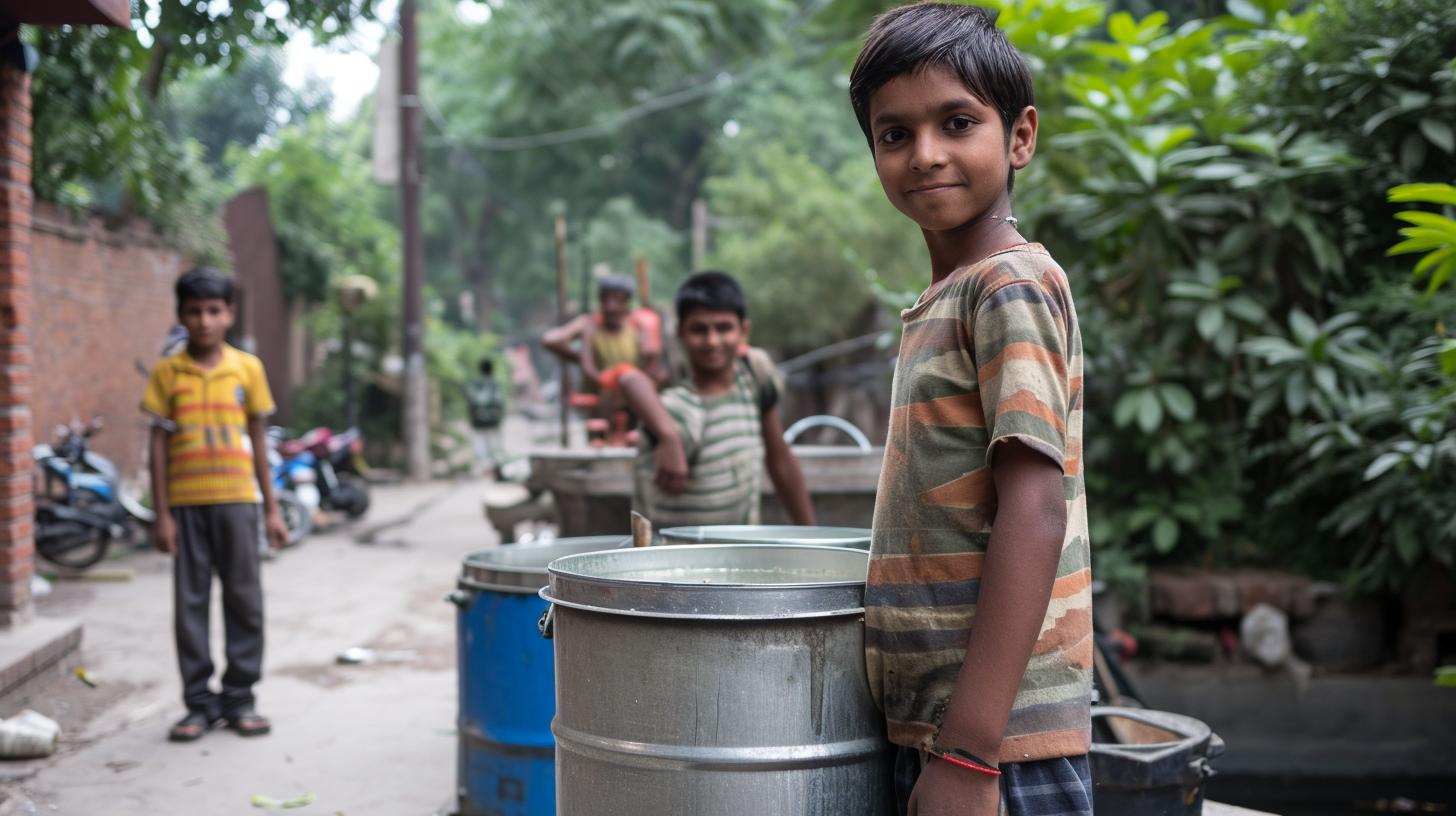
Community health and hygiene play a crucial role in the overall well-being of a community. Good hygiene practices and proper access to healthcare services are essential for preventing the spread of diseases and promoting a healthy living environment.
In this article, we will dive into the importance of community health and hygiene, exploring various aspects such as the impact of poor hygiene on community health, key components of community health and hygiene, strategies for promoting good hygiene practices, collaborative approaches to improving community health and hygiene, overcoming challenges, and the future of community health and hygiene.
By addressing these topics, we aim to shed light on the significance of maintaining good health and hygiene within communities for their development and welfare.
As we delve into this topic, it becomes evident that poor hygiene practices have detrimental effects on community health. From increased rates of infectious diseases to sanitation-related issues, the impact can be far-reaching. By addressing these issues through education and awareness campaigns, alongside collaborative efforts with governmental and non-governmental organizations, there is potential for significant improvement in the overall well-being of communities.
In discussing key components of community health and hygiene, we will also explore strategies for promoting good hygiene practices within communities. By identifying successful initiatives and highlighting their impact on community health, we can gain insights into best practices for fostering positive changes in social behaviors related to health and cleanliness. Throughout this comprehensive exploration, it is evident that taking a holistic approach to addressing community health and hygiene is essential for long-term improvements in public welfare.
The Impact of Poor Hygiene on Community Health
Poor hygiene practices can have a significant impact on the overall health and well-being of a community. From the spread of infectious diseases to environmental pollution, the consequences of neglecting proper hygiene can be severe. In fact, according to the World Health Organization, inadequate sanitation and poor hygiene are responsible for numerous diseases that affect millions of people worldwide each year.
1. Increased Risk of Infectious Diseases: Poor hygiene, particularly in terms of sanitation and water quality, can lead to the spread of infectious diseases such as diarrhea, cholera, and typhoid fever. Without access to clean water and proper sanitation facilities, communities are at a higher risk of contracting these preventable illnesses.
2. Environmental Pollution: Improper waste management practices can result in environmental pollution, which not only affects the aesthetics of a community but also poses serious health risks. Polluted water sources and air contaminated with waste particles can lead to respiratory problems, skin infections, and other health issues.
3. Negative Impact on Children’s Health: Children are especially vulnerable to the effects of poor hygiene. In communities where basic sanitary conditions are lacking, children are more likely to suffer from malnutrition, stunted growth, and a range of waterborne illnesses.
It is evident that poor hygiene practices can have dire consequences for community health. By addressing these issues through education, infrastructure development, and collaborative efforts, communities can work towards improving overall well-being and creating a healthier environment for generations to come.
Key Components of Community Health and Hygiene
Community health and hygiene are essential for the well-being of any community. It is important to address various components to ensure that the community as a whole can thrive and be healthy. Below, we will discuss the key components that contribute to community health and hygiene.
Access to Clean Water
Access to clean water is fundamental for good hygiene and overall community health. Without clean water, individuals are at risk of contracting waterborne diseases, which can have a significant impact on the community’s health. It is crucial for communities to have access to clean and safe drinking water, as well as proper sanitation facilities.
Waste Management
Effective waste management is another important component of community health and hygiene. Improper disposal of waste can lead to environmental pollution, contamination of water sources, and the spread of diseases. Communities need robust waste management systems in place to ensure that waste is properly collected, treated, and disposed of in a way that minimizes harm to public health and the environment.
Disease Prevention
Disease prevention strategies play a critical role in maintaining community health and hygiene. This includes vaccination programs, regular medical check-ups, and early detection of potential outbreaks. Education on proper handwashing techniques, food safety practices, and personal hygiene also contribute to disease prevention efforts within the community.
By addressing these key components of community health and hygiene, communities can work towards creating a safer and healthier living environment for all residents. It is essential for local governments, organizations, and residents to prioritize these components in order to promote overall well-being within the community.
Promoting Hygiene Practices in the Community
Strategies for Promoting Good Hygiene Practices
One of the most effective ways to promote good hygiene practices within a community is through education and awareness campaigns. By providing information about the importance of handwashing, sanitation, and proper waste disposal, community members can be empowered to make positive changes in their daily routines. Additionally, leveraging community leaders and influencers can help spread the message and encourage widespread adoption of hygienic practices.
Examples of Successful Hygiene Promotion Initiatives
Several successful hygiene promotion initiatives have made a significant impact on community health and hygiene. For example, in rural areas of developing countries, organizations have implemented programs that provide access to clean water sources and sanitation facilities. These efforts not only improve hygiene practices but also contribute to disease prevention and overall well-being within the community.
Another effective strategy for promoting hygiene practices is through behavior change communication campaigns. By utilizing creative and culturally relevant messaging, these campaigns have succeeded in raising awareness about the importance of hygiene and motivating individuals to adopt healthier habits.
The Impact on Community Health
When communities embrace good hygiene practices, there is a direct improvement in overall community health. Reduced rates of waterborne diseases, lower instances of food-borne illnesses, and decreased transmission of infectious diseases are just some of the positive outcomes associated with improved community health and hygiene. By implementing practical and sustainable strategies for promoting hygiene practices, communities can experience long-term benefits for their well-being and development.

Community Health and Hygiene Education
One key aspect of community health and hygiene education is the dissemination of information on proper hygiene practices. This includes teaching individuals about the importance of handwashing, proper food handling, personal sanitation, waste management, and water purification. Additionally, educating community members on the early signs of common illnesses can help prevent the spread of disease within the community. By equipping individuals with this knowledge, they are better prepared to protect themselves and others from potential health risks.
Furthermore, ongoing education and awareness campaigns are essential for instilling good hygiene habits within a community. These initiatives can be delivered through various channels such as workshops, seminars, school programs, and public service announcements.
Community health educators play a pivotal role in leading these efforts by engaging with local residents and providing them with practical guidance on how to maintain clean environments and adopt healthy behaviors. By collaborating with local leaders and stakeholders, these educational programs can have a widespread impact on community health and hygiene.
| Aspect | Importance |
|---|---|
| Proper hygiene practices | Teaching individuals about important aspects like handwashing. |
| Ongoing education | Education & awareness campaigns can have considerable impacts when lasting; |
| Local leaders & stakeholders collaboration | A broad cooperation has great capacity; |
Collaborative Approaches to Improving Community Health and Hygiene
Effective community health and hygiene initiatives often require collaborative efforts from various stakeholders, including governmental and non-governmental organizations, public health agencies, and community leaders. By working together, these entities can address community health and hygiene issues in a more comprehensive and sustainable manner.
One example of successful collaboration is the partnership between local health departments and community-based organizations to implement hygiene promotion programs. These programs not only provide education on proper handwashing techniques and sanitation practices but also distribute essential hygiene supplies to underserved communities. This collaborative approach has resulted in notable improvements in community health and hygiene, reducing the incidence of water-borne illnesses and promoting overall well-being.
Another impactful collaborative effort is the joint venture between governmental authorities and non-profit organizations to improve access to clean water in remote areas. By combining resources and expertise, these partnerships have been able to develop sustainable water supply systems, conduct water quality testing, and provide valuable education on water purification methods. As a result, communities have experienced significant reductions in water-related diseases, ultimately contributing to improved community health.

In addition to these examples, it’s important for collaborative approaches to also involve active participation from community members themselves. Empowering local residents through training programs on waste management or involving them in decision-making processes related to health initiatives can lead to more effective solutions that are tailored to the unique needs of each community. Ultimately, such collaborations can pave the way for long-term improvements in community health and hygiene.
Overcoming Challenges in Community Health and Hygiene
Ensuring community health and hygiene is crucial for the overall well-being of a population. However, there are several challenges and barriers that hinder the achievement of optimal community health and hygiene. One common challenge is the lack of access to clean water and proper sanitation facilities in many communities around the world. This leads to an increased risk of waterborne diseases and poor hygiene practices, ultimately impacting community health.
In addition, limited education and awareness about the importance of good hygiene also pose a significant challenge. In some communities, there may be cultural or traditional beliefs that hinder the adoption of modern hygiene practices. Changing deep-rooted behaviors and beliefs requires careful planning and culturally sensitive approaches to overcome this barrier.
Furthermore, economic constraints can prevent communities from investing in infrastructure for improved sanitation and waste management. Without adequate resources, it becomes difficult to implement sustainable solutions for promoting community health and hygiene.
To address these challenges, collaborative efforts involving governmental and non-governmental organizations, public health agencies, and community leaders are essential. By working together, these entities can pool resources, knowledge, and expertise to develop effective strategies for improving community health and hygiene. Additionally, targeted education campaigns tailored to the specific needs and cultural context of each community are necessary to instill good hygiene habits.
Overall, overcoming challenges in community health and hygiene requires multidimensional approaches that address the root causes of poor hygiene practices while also fostering a sense of ownership within the community. By implementing sustainable solutions and promoting ongoing education, communities can work towards achieving optimal health and well-being for all individuals.
The Future of Community Health and Hygiene
One key aspect of the future of community health and hygiene is the potential advancements and innovations in the field. Technologies that improve access to clean water, enhance waste management systems, and facilitate disease prevention will play a crucial role in promoting healthier communities.
For example, advancements in water purification methods and sanitation technologies can significantly impact community health by reducing the risk of waterborne diseases. Additionally, innovative approaches to waste management can help minimize environmental pollution and its negative effects on public health.
Furthermore, collaborative efforts between governmental and non-governmental organizations, public health agencies, and community leaders will continue to be vital in addressing community health and hygiene issues. By working together, these stakeholders can leverage their resources, expertise, and influence to implement effective strategies for improving community well-being. Successful collaborative initiatives have demonstrated the potential for positive impact on public health outcomes, highlighting the importance of continued partnerships in shaping the future of community health and hygiene.
| Advancements | Collaborations |
|---|---|
| Technologies improving access to clean water | Collaborative efforts between stakeholders |
| Innovative approaches to waste management | Public-private partnerships |
Conclusion
In conclusion, community health and hygiene play a pivotal role in the overall well-being and development of a community. As discussed in this blog post, the impact of poor hygiene practices on community health can be significant, leading to an increased risk of diseases and other health issues. Therefore, it is essential to address key components such as access to clean water, waste management, disease prevention, and promoting good hygiene practices within the community.
Education also emerges as a critical factor in improving community health and hygiene. Ongoing education and awareness campaigns are necessary to instill good hygiene habits in the community. Moreover, collaborative approaches involving partnerships between governmental and non-governmental organizations, public health agencies, and community leaders are essential for addressing community health and hygiene issues effectively.
Despite common challenges and barriers that may arise, sustaining efforts to maintain community health and hygiene is of utmost importance. By highlighting potential advancements and innovations in the field, there is hope for further improvements in community well-being.
Ultimately, prioritizing community health and hygiene is not only beneficial for individuals but also for the collective development of communities. It is imperative that all stakeholders continue to work together to ensure the successful implementation of strategies aimed at enhancing community health and hygiene for the betterment of society.






